If Neil Armstrong’s first walk on the moon was one small step for man, Starfield feels like one giant leap for gamers. It’s hard to equate what Bethesda has accomplished with this massive space RPG to any other game, notably in size and depth. I think many people expected Starfield to be big. Still, no one could have predicted that the developers behind Fallout 76 would be able to follow up an outright disaster with arguably one of the greatest space games ever made.
I won’t claim to have been a space enthusiast since I was knee-high to a Heatleech. In fact, I wouldn’t come to infatuate over the darkest sea until 2015, when I discovered Elite Dangerous and would spend all the hours of the night hauling cargo from system to system. The monotonous tasks in the cold depths of space felt like home, and I quickly fell in love with the idea of life in the cosmos.
What Elite Dangerous lacked in depth, No Man’s Sky more than made up for. But even Hello Game’s limitless universe felt empty in its grand scheme. Both games gave me an itch I didn’t have before and left me to dream of a game that would come along and scratch it. A game that didn’t exist until Starfield.
Where Does The Final Frontier End
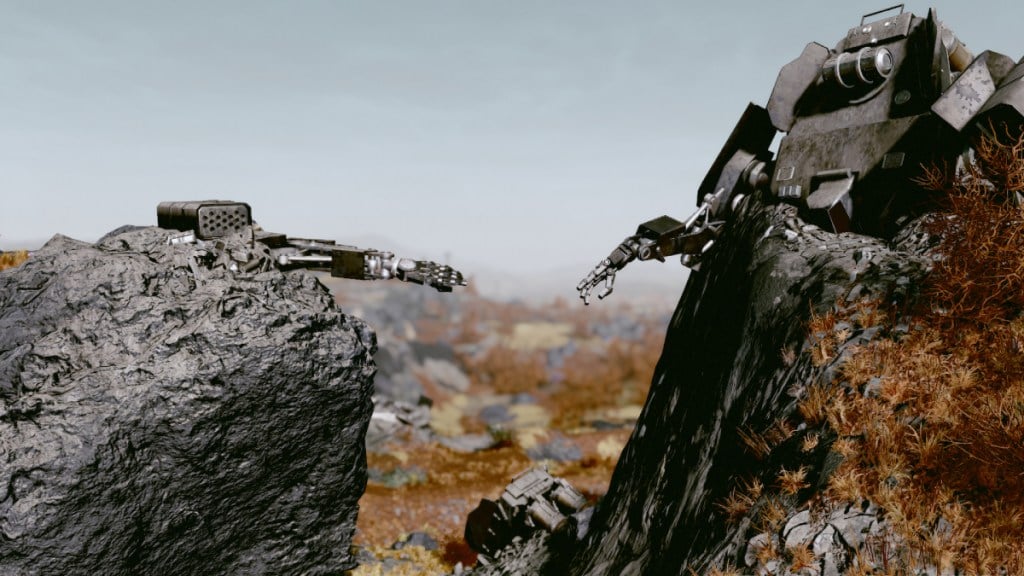
Anyone who saw even an inkling of a presentation on Starfield over the last several months likely walked away with one universal piece of information. Starfield is big. It’s all Todd Howard and Phil Spencer could manage to talk about. “Starfield is the biggest game Xbox has ever made.” “Bethesda has never made a game as big as Starfield.” “This game has the biggest city with the biggest guns and the most items you could ever collect.”
Big was synonymous with Starfield, and rightfully so.
This may sound like hyper-driven hyperbole, but I’ve spent over 100 hours with Starfield and feel I’m only scratching the surface. To play the numbers game, I’ve completed just over 40 side quests, I have a few dozen sitting in my mission log waiting to be completed, I’ve completed an entire faction questline, have only really explored a handful of planets, and have dabbled in a few of the Starfield’s other mechanical systems.
As for what I’ve not done, I’ve barely touched the main story, have just breached the right side of the star map, and just started building my first base – of which you can have eight. I’ve not attempted to romance companions, mod weapons/armor, build ships from scratch, or explore most of the major cities/quest hubs.
So far, I’ve discovered ten cities or settlements that seem important enough to be called “major.” Keep in mind I still have 30-50 star systems I need to visit, and I’m not including all of the massive Staryards and party yachts that are equal in size to some of the on-planet towns. Each one of these is crawling with NPCs – both generic and named – that are dying to dish out quests. It’s grown to the point that I’m a bit terrified to enter a new city, building, or system because I’ve already accumulated a massive backlog of quests that grows at a seemingly insurmountable rate.
But those have to run out eventually, right? The hand-crafted ones certainly will… eventually. These are given to you by the important NPCs – you know, the ones with actual names and personalities – but there’s also a way to generate new, semi-generic quests infinitely.
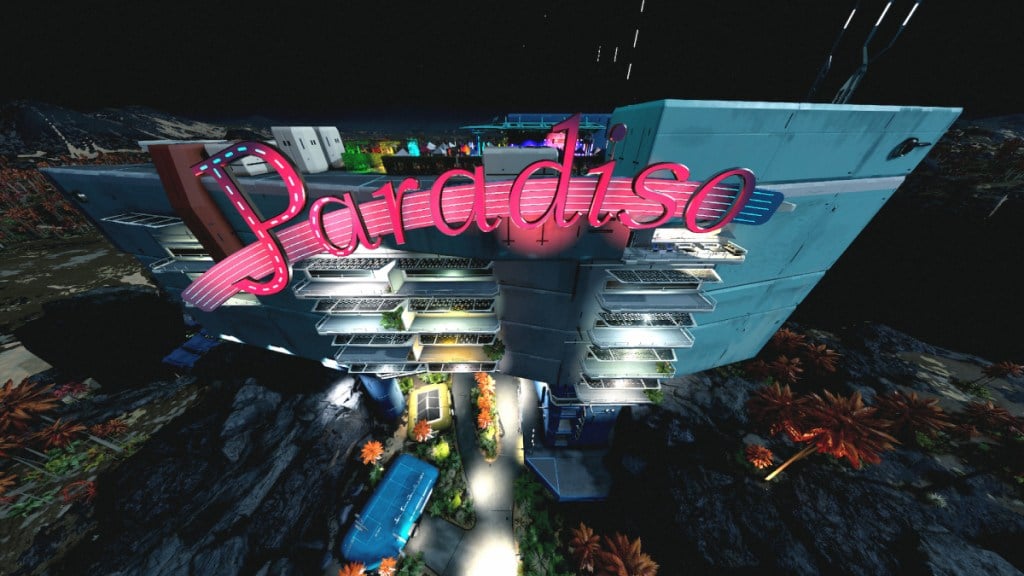
Missions on bounty boards, hauling cargo, smuggling contraband, running missions for Ryujin, collecting debts for GalBank, and a few more “secret” quest-givers can supply the player with endless, albeit repetitive, ways to kill time and accumulate credits. And wait, there’s more. Every planet you can land on will procedurally generate structures conveniently marked on your hud when using your scanner that offer even more loot, quests, or just good old-fashioned carnage.
If you tire of roaming the galaxy in pursuit of whatever quest comes into your crosshairs, there are story missions. Each faction has multiple narratives – United Colonies, Freestar Collective, Crimson Fleet, etc. – and one main storyline that centers on Constellation and the pursuit of the unknown.
At the time of writing, I’ve only completed one faction questline, UC Vanguard, all the way through. It was incredible. The story felt like it could have been the game’s main story had it been stretched a bit further, and the dynamic range of outcomes for several quests along the way made it feel like I was indeed in control of the narrative. I controlled when characters received pertinent information, chose how to deal with threats or obstacles in whatever way I saw fit, and ultimately decided the story’s outcome – with the fate of some characters resting in the palm of my hand.
So, if I were to describe Starfield in one word, I would likely take a page from Howard and Spencer’s book and settle on “big.”
Big, by default, doesn’t mean dense or even good. However, in the case of Starfield, big means excellent, rich, substantial, and limitless. So, if you’re asking if there is a lot to do in the “big space game,” the answer is “hell yes.”
Everything Has A Purpose
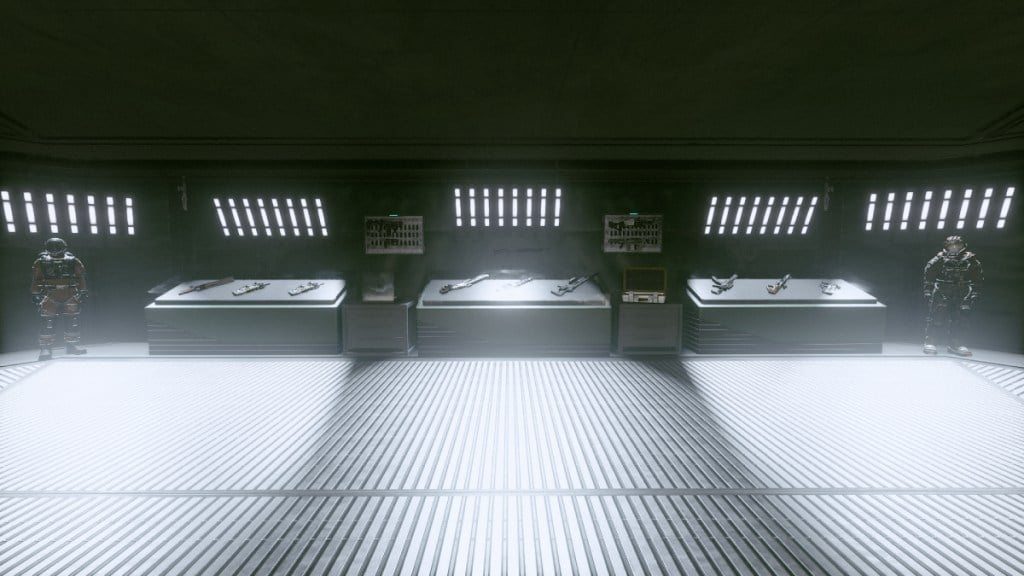
Another part of Starfield’s “big = good” equation is all of its items. Bethesda is known for allowing its players to pick up nearly every item they see, whether it be a wheel of cheese, a butter knife, or a Superpowered Cryogenic Freeze Ray. As Howard once said, “We love our stuff.”
But a lot of the time – in Skyrim and Fallout specifically – these items feel like garbage. I mean, in Fallout, they are stored under the “Junk” category in the player’s inventory, and their only purpose is to be used as scrap. It’s always been a neat feature but has felt useless in execution.
Starfield changes things, which becomes apparent when players delve into crafting, base building, and decorating. From the get-go, you’ll start noticing bits and bobs with longer descriptions when you pass over them with your crosshair.
No, that bag of coffee isn’t just for looks. That bundle of rope isn’t useless. If you see an air tank, tree root, battery, manifold, piston, or jar of alien goop, chances are that specific item – not the waste product of some ambiguous scrapping mechanic – is used in a crafting recipe. It took me a while to realize this, and now I’m kicking myself over every Reactive Gauge I left behind because I thought it was a useless paperweight.
Of course, you can manufacture these components if you have the necessary minerals. Speaking of which, minerals are everywhere: stored in bins, in deposits on the ground, and in more significant deposits in caves. See that asteroid flying in space? That’s not just a backdrop! You can actually fly there and destroy it to harvest whatever goodies are inside.
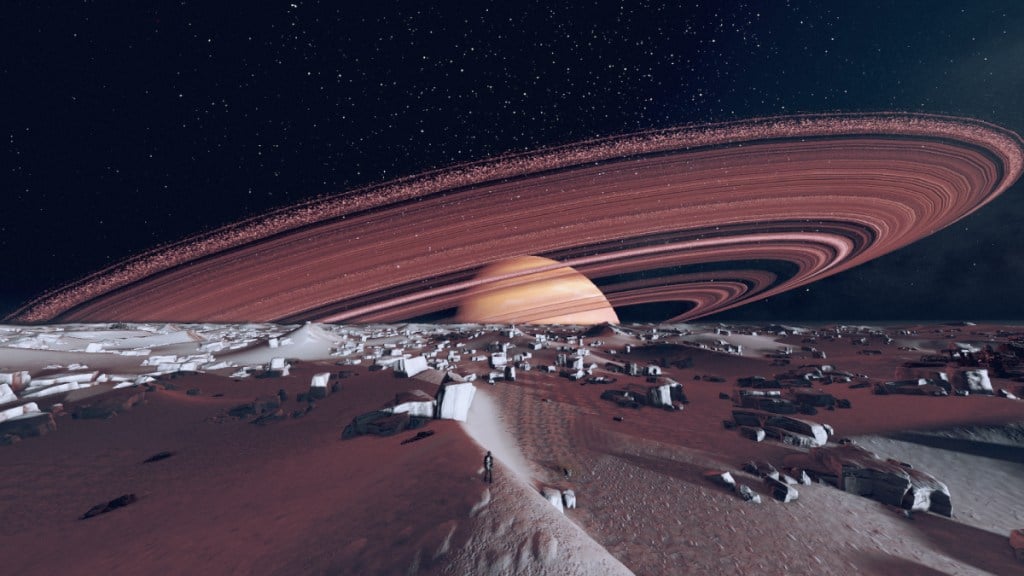
Collecting items is one thing, but displaying them is a different beast. Starfield not only tamed that beast; it turned it into a xenoweapon hellbent on trapping hoarders in a viscous yet gratifying cycle. That’s thanks to the incredibly detail-oriented folks at Bethesda, who provided us collectors with ways to display all of our loot.
And yes, I mean all of it. There are poseable mannequins for armor sets, various display cases and mounts for weapons, racks for boost packs, and special units for helmets. But what about all those real-world novels turned digital you’re carrying around? Throw ‘em on a shelf! There are even multiple stands to display Dataslates.
This is one of Starfield’s greatest strengths, as it makes everything you come across feel important. For a collector like myself, it’s also a bane as I’m constantly trying to manage my mass and cargo capacity, but even that has been a delightful experience.
Procedural Infinity Feels More Practical Than Fantastical
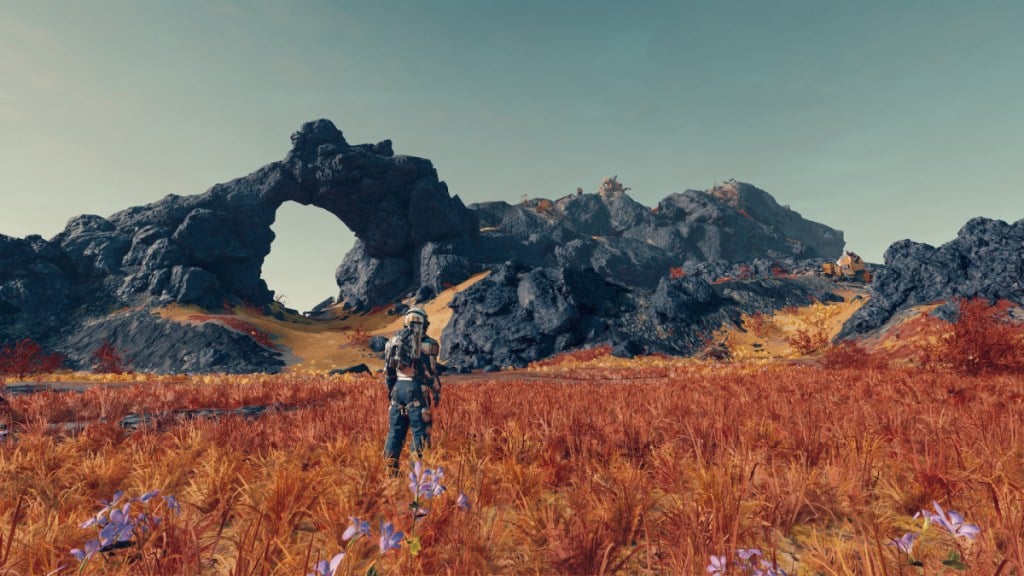
My biggest concern going into Starfield was its procedurally generated content, seeing as No Man’s Sky’s biggest letdown was how its procedural planets all meld together over time. There have been a few standouts here or there, but if you’re throwing an infinite number of darts at a target in a pitch-black room, you’re bound to hit it a few times.
With Starfield being boasted as big and procedural, I feared it would repeat the same mistakes. Luckily, I was proven wrong in most regards, and when I was proven right, it wasn’t 100% in the way I expected.
If you’ve seen one outpost in NMS, you’ve essentially seen them all. They have identical layouts. You know exactly where to go, who to talk to, and what resources you’ll get. You’re in and out in a few seconds, and then it’s on to the next until the repetition numbs your brain.
Starfield is similar, as some of its procedural locations are nearly identical copies. The loot changes. The enemies may belong to a different faction. But for all intents and purposes, if you’ve spotted an abandoned hangar on the horizon, it likely has the same layout as the last one you visited.
However, I don’t mind Starfield’s procedural content all that much. If you go to a generated location – say, an abandoned hangar – a ship could show up that’s better than your current one or that you can sell for a decent chunk of credits. You can stock up on some much-needed helium if you visit a chemical plant. An abandoned weapons facility? It may look the same, but maybe it’ll have a shotgun with explosive rounds this time.
This is also a way the game organically feeds you procedural quests. You walk to a civilian outpost you see on the horizon, and one of the unnamed villagers begs for your help. You have to go to a nearby cave and rescue their friend, which leads you to a resource-heavy area, culminates in a battle with a ferocious alien, and ends in you getting paid for your services.
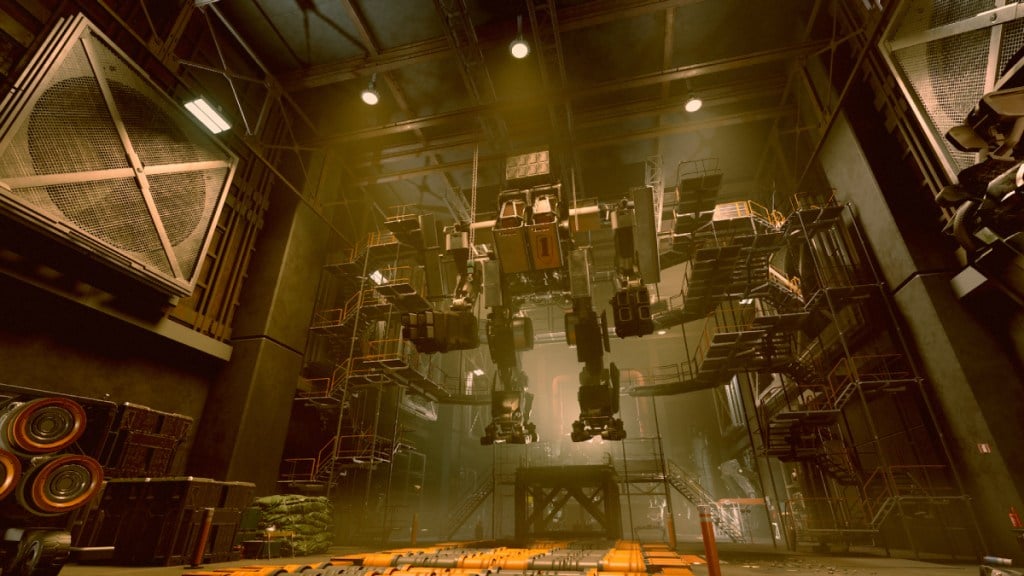
Not to mention, they are all within a few hundred meters of one another. You can land at one, kill and loot, and then scan the surrounding area for more. I’ve rarely stumbled upon an outpost where there wasn’t another in each cardinal direction calling out to me.
As for the planets themselves, I have no complaints. In fact, some of them are a marvel of procedural engineering. Mountain ranges seem hand-placed, biomes blend together naturally, and some incredibly gorgeous scenic settings had me wishing I could urge players to visit it.
Alas, you can’t, as is the downside to procedural content. I can’t tell you where to find the mech graveyard next to the natural rock archway. I can’t tell you where I found my poisonous sniper rifle. I can’t tell you where to find a Terrormorph cave – because it won’t be there for you.
This excites me for future playthroughs since every planet I go to offers a different adventure than the last. But it also means results will vary. I could find a planet I absolutely adore because of my encounters, but that same planet could be a bust for someone else or myself on my next run.
All in all, Starfield’s procedural content feels like a practical solution to filling 1,000 worlds with activities. Not every planet is as wondrous as a fully fleshed-out Star Wars location, but they most certainly don’t feel like the same copy-pasted computer mush.
Enough Space For Multiple Lifetimes
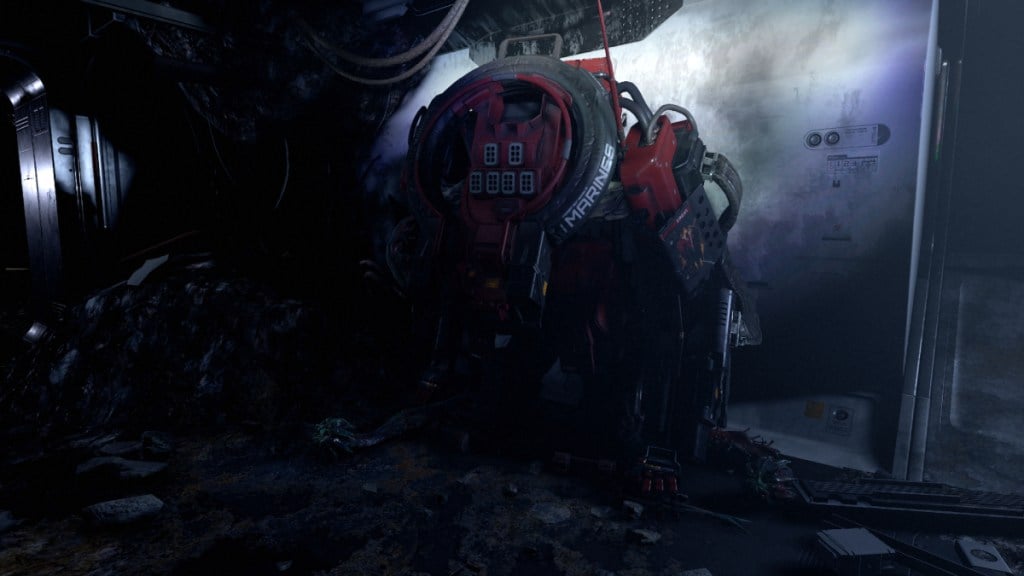
Starfield does an incredible job creating player agency. Your actions, the way you build your character, and how you play actually matter. In truth, it’s what makes the thought of starting a new character so enticing.
I’ve been playing through Starfield with a neutral good alignment. The game doesn’t impose this, but it’s how I’ve chosen to venture around the galaxy my first time around. But in the back of my mind, I’m always wondering how it would feel to join up with the pirates and live a life of crime. Or what if I decided to be a lawful good narc who only ever lives by the highest moral standards?
This isn’t just headcanon nonsense, either. Most of the quests I’ve participated in have allowed me to complete them how I want. Sometimes, they are limited to killing or persuading, but other times, the possible outcomes seem endless. This is backed by the fact that every skill, trait, background, and named companion can affect how encounters play out.
For example, Sarah Morgan is great at sniffing out bullcrap and will call NPCs out on their bluffs. The Wanted trait allows you to talk sense into would-be criminals more skillfully. The Negotiation skill lets you buy your way out of scenarios. Pickpocket gives you access to certain quest items without dealing with any social politics.
RPGs often advertise themselves as a “play your way” type of game, but Starfield genuinely feels like one.
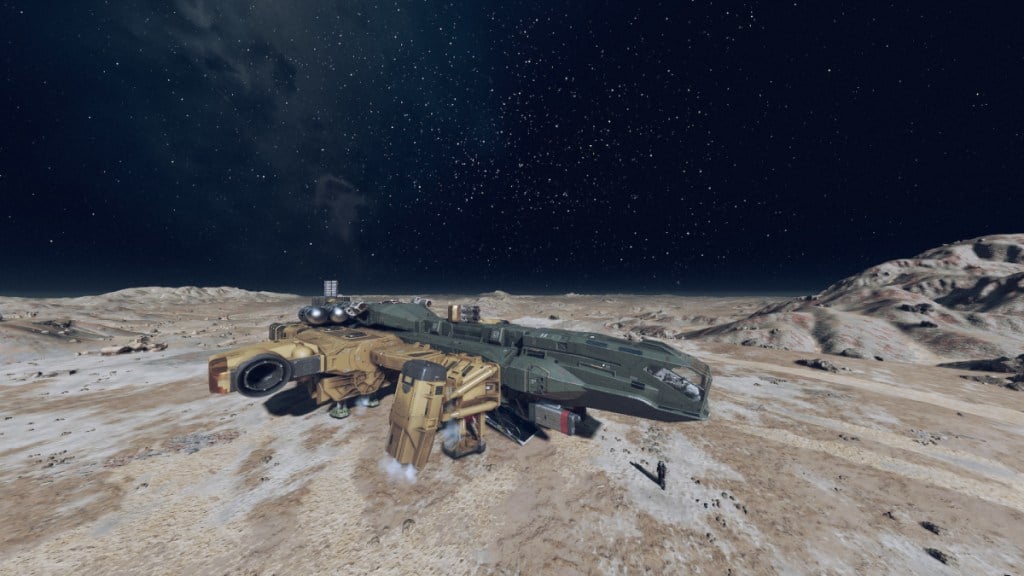
The only thing that slows players down is the skills tree. You can’t really be a jack of all trades, at least not within your first 100 hours, and some basic mechanics are locked behind skills. Pickpockets, sneaking, sliding, and using boost packs are inaccessible until you put a point in those skill slots.
The mental gymnastics you have to do when choosing what skill to invest in can be exhausting. Yet, every point feels substantial regardless of what you end up choosing. An extra 15% damage here or less fuel expenditure there is so much more helpful than at first glance.
While we can share that Starfield does have a new game+ mode – a first for Bethesda games – we can’t say much else. Partially because it’s supposed to be some big magical secret and also because we haven’t reached that point at the time of writing.
Space & Guns & Space Guns
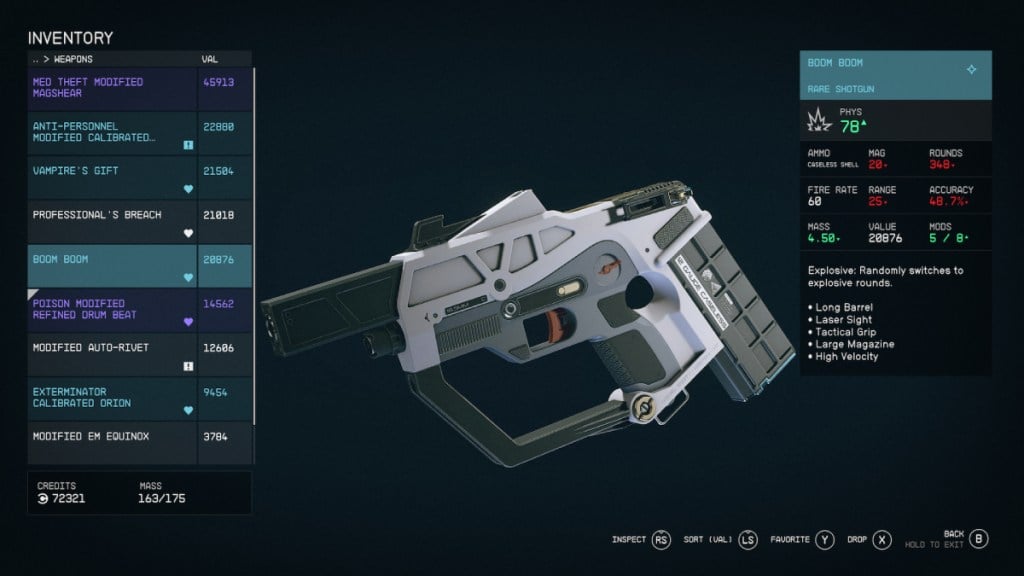
Gunplay, and combat in general, has always been hit or miss in Bethesda games. It really wasn’t until Fallout 4 that using a gun without the assistance of VATS was even a viable idea, as the studio just couldn’t nail down a satisfying combat system.
Even in a fantasy RPG like Skyrim, hailed as one of the greatest of all time, the melee and ranged combat sometimes feels chaotic and nonsensical. So after Starfield’s first gameplay reveal left a bad taste in the mouth, it was important that Bethesda refine the combat mechanics to offer a satisfying experience.
And they did.
Starfield’s shooting, sliding, and vaulting may not be on the same level as Fortnite or Call of Duty, but it’s pretty damn good for an RPG. Especially given the sheer variety of weapons at your disposal and how each one has its own ballistic personality. And each weapon can be fine-tuned via mods to suit a player’s every need.
Even if you want to take your first Eon pistol with you throughout your entire journey, mods, skills, and buffs make it just as viable as a shotgun you might find at level 50.
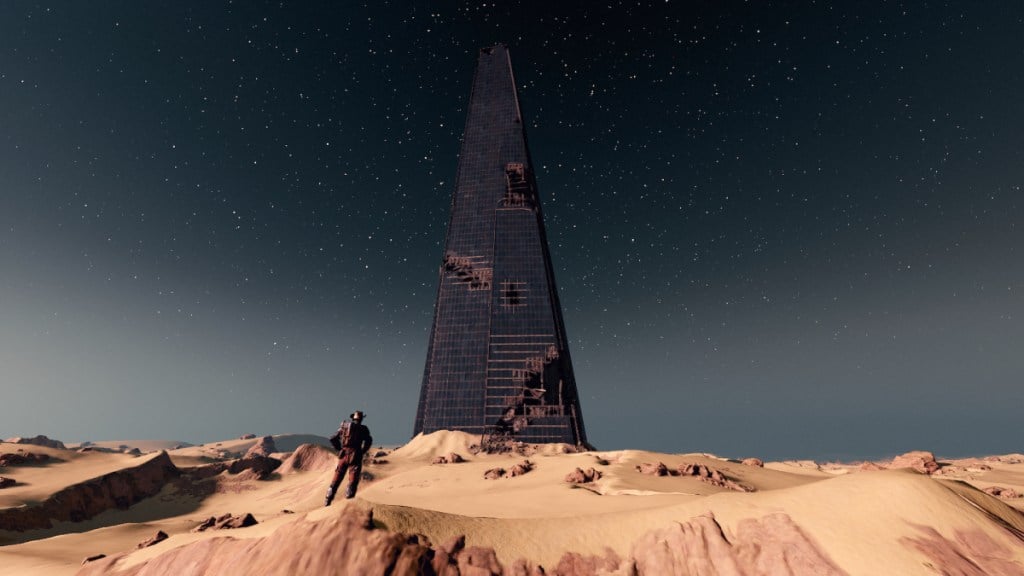
From what I’ve seen so far, weapons can also get a bit wacky. I have a shotgun the size of a pistol named Boom Boom (its god-given name. I didn’t rename it), and every so often, it will fire what can only be described as a grenade. It’s random, so sometimes, if I get too trigger-happy in close quarters, my Boom Boom can backfire and kill me.
Speaking of wacky explosives, grenades and mines in zero gravity are a stroke of genius. Zero gravity combat already feels incredible, what with your gun’s projectiles forcing you backward, but tossing a mine like a frisbee at your enemies is so delightful it makes me want to take up disc golf.
While we are on the topic of combat in three-dimensional spaces, let’s talk about ship combat. It really doesn’t start feeling good until you’ve invested 100k+ credits into your ship’s weapons, shields, and reactor. It’s not bad by any stretch, but I rarely, if ever, feel like Han Solo zooming through the trenches of the Death Star.
I wish Starfield had implemented automatic inputs for things like fast barrel rolls or 180° half-flips to make dogfights feel less like a game of chicken. There’s also no reliable way to dodge incoming fire, so you’re often forced to face tank a barrage of lasers—something really annoying at the start of a player’s journey.
Eventually, you’ll reach a point where your ship can easily withstand hailstorms of bullets from multiple enemies, but that’s not until you’ve got the credits to make it happen. You can also hire crew members to help with shield regen and system repairs, but even those buffs feel marginal when you’re flying an aluminum can into a gang of Crimson Fleet pirates.
Houston, Where Are The Problems?
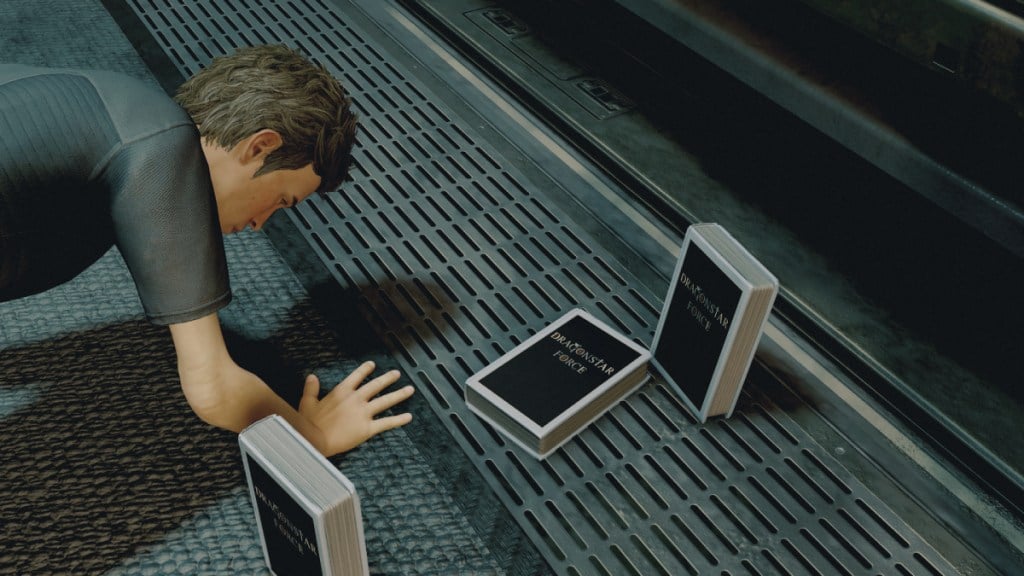
You can’t talk about a Bethesda game without mentioning their goofy bugs or silly glitches or whatever else fans like to call their lack of polish. So, pairing Bethesda with modern gaming’s norm of disastrous AAA launches (I’m looking at you, Redfall), it was presumed that Starfield would be a mess. A fun mess, but a jumbled package nonetheless.
Yet, the one way Starfield is unlike any Bethesda game before is its level of polish and pristine performance. In my 100 hours of play, I’ve only experienced a few minor bugs and one crash. The crash was after I unplugged my Xbox Series S and attempted to Quick Resume in the middle of New Atlantis, so the jury is out on whether Starfield’s performance was the actual culprit.
As for the bugs, they didn’t impact gameplay at all. My character model darkened in the menu, a problem resolved with a relaunch, and an enemy clipped through a door once as he opened it.
Performance-wise, I’ve only suffered from marginal frame drops in certain parts of New Atlantis or when building an outpost with the aerial camera. I’ve played on the Xbox Series S my entire time, and it’s run beautifully. I’ve actually been taken aback a time or two, as I wasn’t even sure the Series S could render the lighting and detail Starfield boasts.
Definitely Not Microsoft Flight Simulator
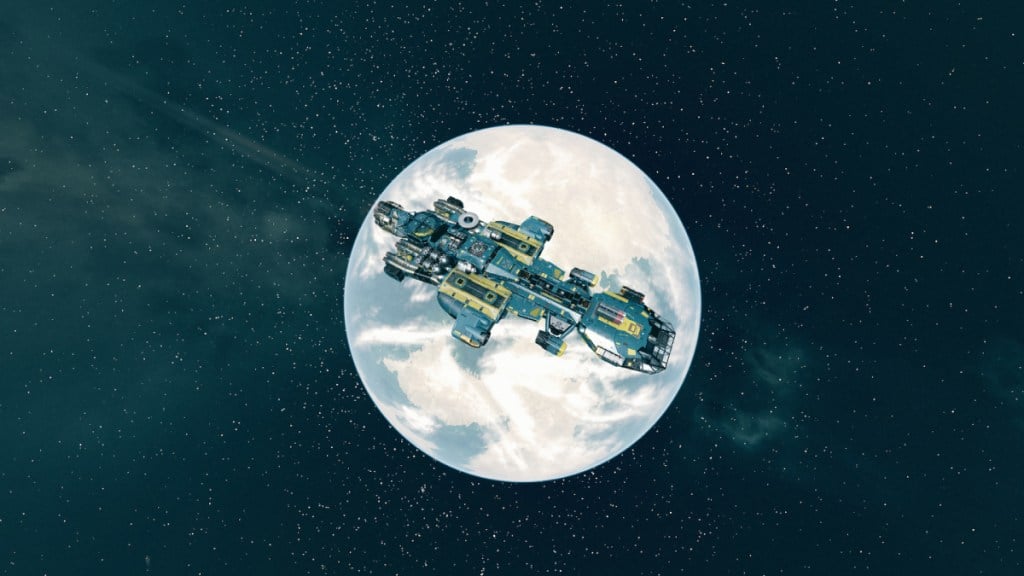
My biggest complaint for Starfield has nothing to do with performance or lack of content – and I later realized it makes the game better. Save for combat encounters and very short jogs when warping to a Staryard, there’s no point in driving your ship around.
One thing I love about Elite Dangerous and No Man’s Sky is sitting back and cruising through the stars. I adore engaging in hyperdrive and seeing I have 30 seconds to a minute before I arrive at my destination. That’s nonexistent in Starfield, but here’s why that’s okay.
There is much more to do in Starfield than in NMS and ED. Manually driving from planet to planet would slow the player down immensely, making intergalactic travel a slog. Where No Man’s Sky is all about blindly exploring with little need to backtrack to any planet, Starfield adds a layer of deep questing that takes players back to the same cities, planets, and systems.
Driving back and forth would get tiresome, so I can sympathize with Bethesda’s choice to omit manually flying from planet to planet. That said, I still wish it was an option. Even if it took five minutes to fly to a planet, it would be nice to do so, especially since you can get out of the captain’s seat and walk around your ship mid-flight.
Verdict
I had plans going into Starfield. I thought I knew how I was going to play. But like a solar flare to a ship, Bethesda’s masterpiece of a space RPG knocked me into a black hole where hours feel like minutes, and any attempt to escape its intoxicating grasp is futile. I got lost in space, and it felt so good.
Starfield is THE space game. There’s no reason to play any others, at least not any currently available. It’s an experience made even more enticing as the game will be available on Game Pass from day one and forever. With modders supposedly having the ability to craft entire planets, it’s likely Starfield will dominate the space RPG genre for years and years to come.
Final Score:
10 / 10
| + It’s bigger and better than Todd and Phil said it would be | |
| + Procedural content feels more practical than in other games | |
| + Combat is satisfying, creative, and gives players many options | |
| + Game allows you to play how you want truly & makes choices matter | |
| + Did I mention there is a lot of content… like a lot |
Gamepur team received an Xbox Series X|S code for the purpose of this review.

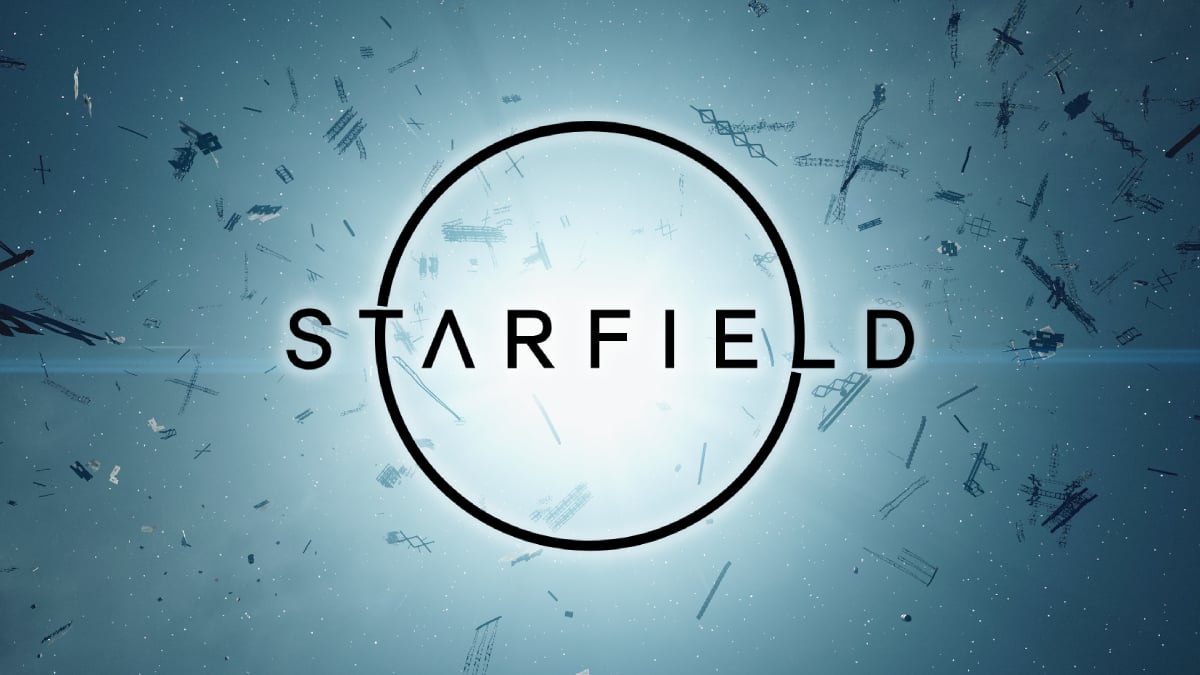
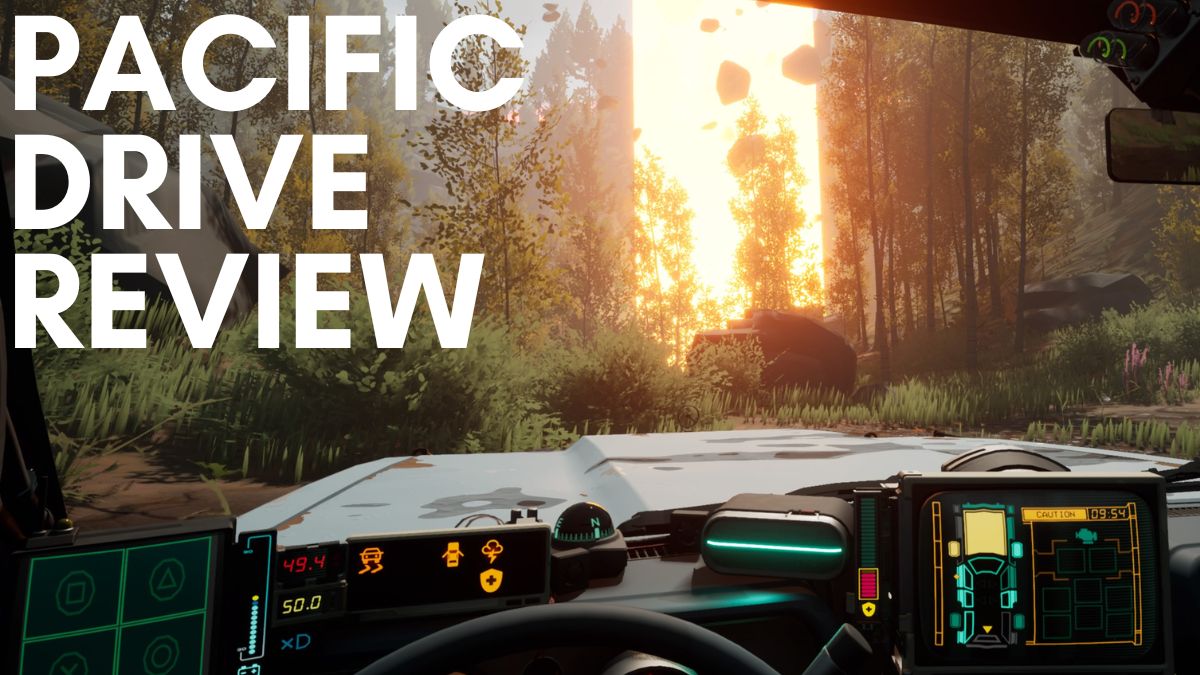
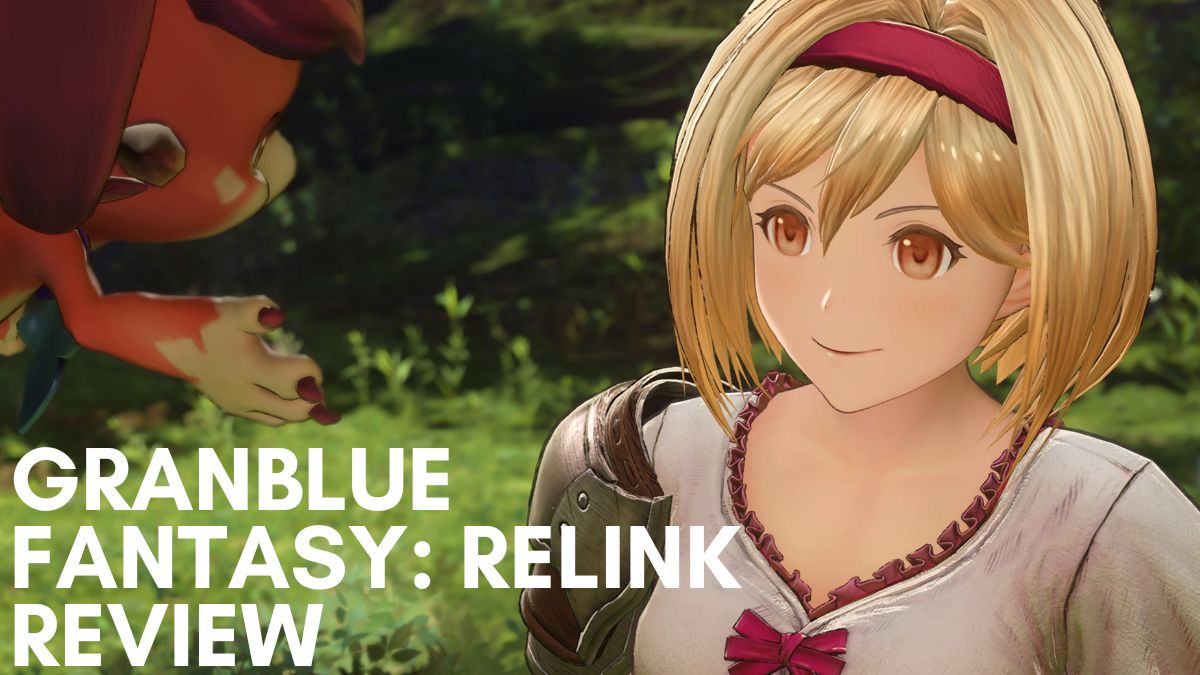
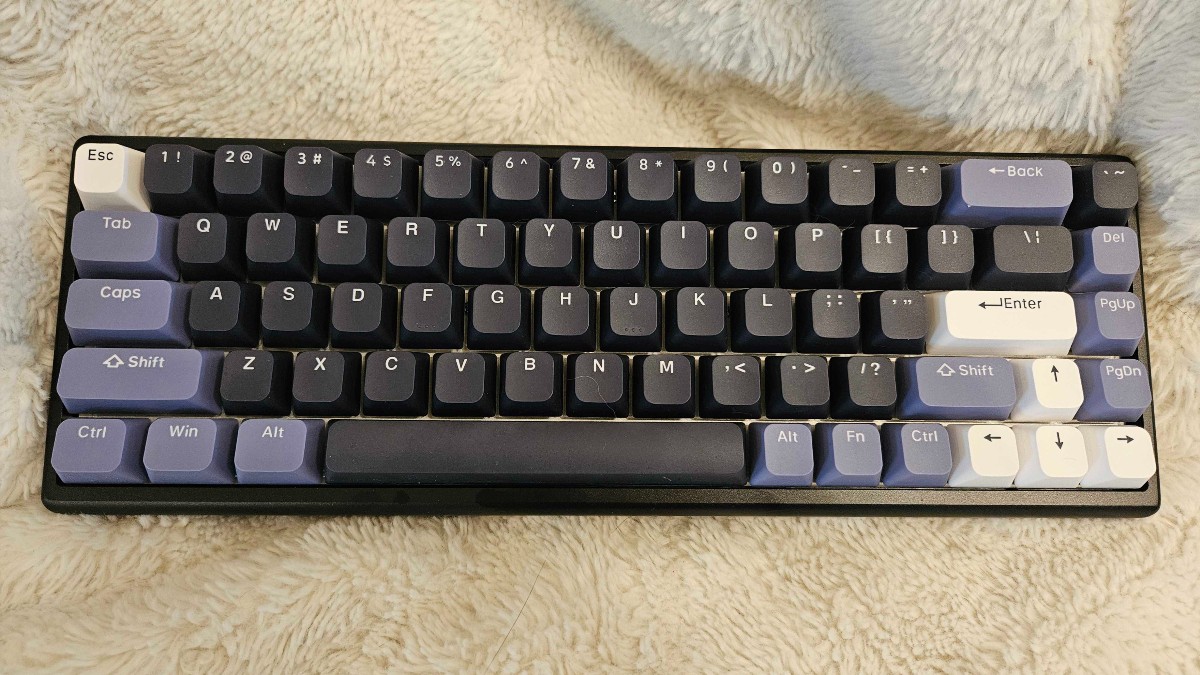
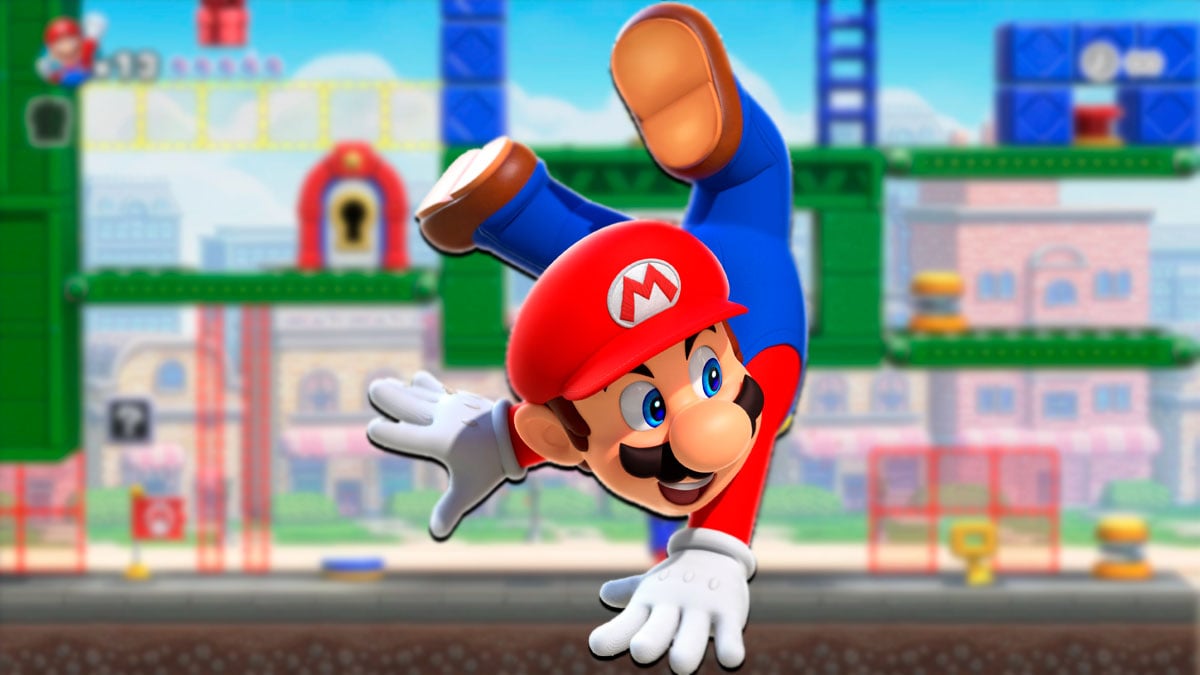

Published: Aug 31, 2023 11:00 am